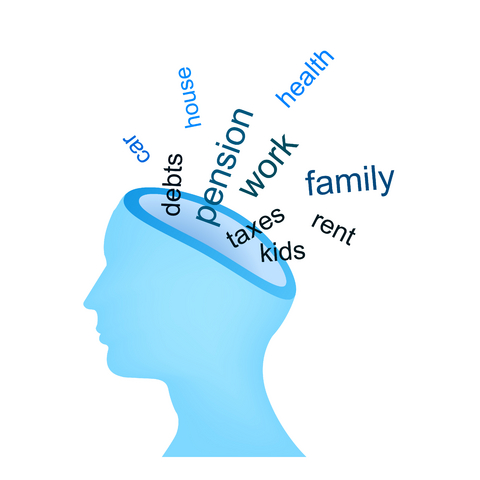BOLD STATEMENT: there’s no such thing as compassion fatigue! What?
Have you heard all of the talk in healthcare and in the literature about “compassion fatigue?” I just did a Google® search for the keywords “compassion fatigue in nurses” and came up with 104,000 links, up from 46,700 links just last spring! What?! You’d think that we’re all suffering from burnout, which can’t be possible…or, is it?
The notion that being compassionate can cause fatigue gives me cause to pause, how about you? Can compassion really lead to fatigue? Can caring so much for another cause burnout?
Perhaps the problem isn’t compassion fatigue, but a matter of not knowing how to care for ourselves and how to care for our mind when we’re caring for others. Perhaps the problem isn’t “compassion fatigue” but in how we define compassion and how we care for our own heart and mind when caring for others.
There’s actually plenty of evidence that shows that helping others can actually make us happier. And research into practitioners who use compassion-meditation techniques has shown that we can actually modify the neural (brain) pathways that control our emotions – please see post from Meditation Increases Our Ability to Be Compassionate.
If the problem isn’t due to compassion “fatigue,” but due instead to our not caring for ourselves and for our minds, then how do we change the way(s) that we care for ourselves?
I tend to learn things more easily when they’re numbered or put into lists. Here’s an easy-to-use list of five reminders that can help us to keep our heart in our work, while keeping our mind in ease.
A Simple List of Things that We Can Do to Maintain a Compassionate Presence at the Bedside:
- Remember to give ourselves the same love (or “care”) that we want to give to our patients. Don’t we deserve that much care? Where have we gone wrong where we’ve equated a self-centered selfishness for a genuine love or compassion for ourselves? Why do we believe that caring for ourselves is any less important than caring for our patients?
- Recognize others as wanting the very same things that we want, to be happy and to be free from suffering. This can be essentialized when we say, see others as being “another me.” When we think about it, those we care for are like us in their desire to be free from suffering and wanting to be happy.
- We need to remember, repeatedly, that whatever we’re feeling at the moment will eventually dissipate, and that we’ll be feeling something different within a matter of minutes or days. Everything that we experience and feel is impermanent, so if we can remain present in the moment while we’re attending to another, without letting the thoughts and feelings distract us, we can attend to others more easily. We can learn a lot about the impermanence of our thoughts and sensations through learning to practice meditation.
- We need to remember our connection with others. Albert Einstein wrote:
A human being is a part of the whole called by us “Universe,” a part limited in time and space. He experiences himself, his thoughts, his feelings, as something separate from the rest—a kind of optical delusion of his consciousness. The delusion is a kind of prison for us, restricting us to our personal desires and to affection for a few persons nearest to us. Our task must be to free ourselves from this prison by widening our circle of compassion to embrace all living creatures and the whole of nature in its beauty. Nobody’s able to achieve this completely, but striving for such achievement is in itself a part of the liberation and a foundation for inner security.[i]
- Finally, and I stumble on this one constantly, is to forgive ourselves each time that we find ourselves standing knee-deep in the cesspool of mindlessness. Each time that we remember that we’ve forgotten to be present is an invitation to return to our mind and to our intention to care.
In summary:
- caring for ourselves as we would care for others,
- remembering that others wish to be happy and avoid suffering,
- remembering that thoughts and emotions are impermanent,
- remembering our connection to others,
- practicing self-forgiveness.
There’s a practice, you could call a “meditative” practice, called loving kindness that helps us to work with these points. Please feel free to download this Loving Kindness Practice and use it as a support. You can even carry it in your pocket and read from it during your breaks at work, or at home. And, let me know if you need something else to work with; I know that I’m constantly using different tools at different times to support my inescapably distracted mind!
How I Can Help You to Commit to Your Meditation Practice
(At the end of this post, read about the upcoming meditation retreat, just for nurses, in Hawai’i. It’s going to great! It’s going to be fun! But most of all, it will teach you how to turbo-boost your meditation practice, so that every day can be a meditative one! Read on…)
Maybe you’ve already got a meditation practice. If that’s the case, great! Keep it up. And feel free to use all of the content from this site to support you in your efforts. If you haven’t started to meditate, begin now.
Many people don’t meditate because they believe that they need to do “something special” in order to meditate, maybe you’re one of them. “Doing something” special isn’t the case. All you need is your breath, and a few minutes of time set aside to begin your practice. Here are some tools to get you started:
- Meditation audio for using your breath as the anchor of your attention during meditation.
- Ebook and two chapters from the book, Minding the Bedside: Nursing from the Heart of the Awakened Mind, on how to meditate.
- Here’s a pitch for my book, Minding the Bedside: Nursing from the Heart of the Awakened Mind. You can even buy it in a Kindle version! Why buy it? Because I really did write it for you. Because it’s a meditation book written just for nurses (although others who are not nurses have bought the book and raved about it!). And, because it has EVERYTHING that you need to learn how to meditate and to use your practice at the bedside.
This site has tons of tools for learning how to meditate.
I encourage you to look through the HUNDREDS of articles that I’ve written and especially check out my weekly meditation tips and other useful meditation materials provided for your health and well being. And please let me know if you’d like to discuss anything with me, have any questions or need clarification regarding anything that I’ve written about.
Thanks for visiting and have a mindful day.
Meditation Retreat for Nurses in Hawai’i
While meditation is a skill that can be practiced by anyone, it’s important to remember that learning to meditate well, really having a stable and vital practice, comes with periods of intense and sustained practice. In order to give you that practice, I’m arranging to have a small group of nurses join me in Hawaii in 2016. If you’d like to come on this retreat or have an interest in similar retreats, please visit this page.
This post was written as part of the Nurse Blog Carnival If you are interested in participating find out more details and sign up here.
[i] Letter of 1950, as quoted in the New York Times (29 March 1972) and the New York Post (28 November 1972). However, The New Quotable Einstein by Alice Calaprice (Princeton University Press, 2005: ISBN 0691120749), p. 206, has a different and presumably more accurate version of this letter, which she dates to February 12, 1950, and describes as “a letter to a distraught father who had lost his young son and had asked Einstein for some comforting words.” A human being is a part of the whole, called by us “Universe,” a part limited in time and space. He experiences himself, his thoughts and feelings as something separate from the rest—a kind of optical delusion of his consciousness. The striving to free oneself from this delusion is the one issue of true religion. Not to nourish it but to try to overcome it is the way to reach the attainable measure of piece of mind.






I loved this post! I could not agree with you more. I definitely think you on onto something with the BOLD statement you made. Personally during my self reflection, I essentially came to the same conclusion as you have. I have never had a problem in the past with compassion toward others, only myself by my neglecting my own personal needs. I am so glad someone finally said it!
Dear Erica – Thanks for writing. Yah, it really makes sense doesn’t it? When I’m feeling compassionate towards others, there’s no feeling of burnout. It’s only when I really haven’t taken care of myself that I start feeling like, “Oh my god, how much longer can I go on?” For me, and it sounds like you’ve gotten there too, it makes sense to apply the compassion and care “at home” first before trying to go out and help my patients. Thanks for all that you do to help alleviate the suffering and worries of others. Take care, Jerome
[…] I’ve shared my views on compassion fatigue (or a lack of it) on this site as well as on sites like LinkedIn and What Meditation Really Is, I’m not going into that here. […]
[…] I’ve written a lot about my belief (very strong belief!) that there’s no such thing as compassion fatigue! […]